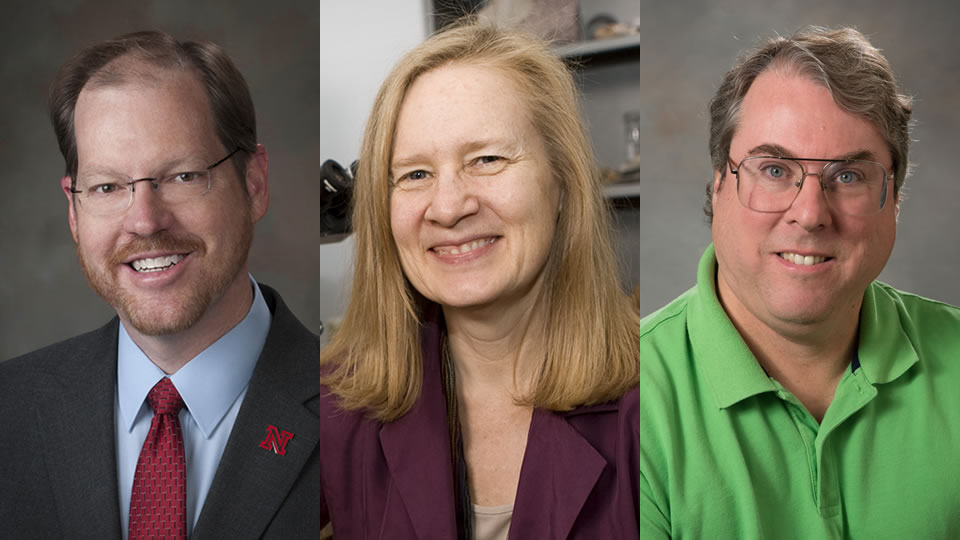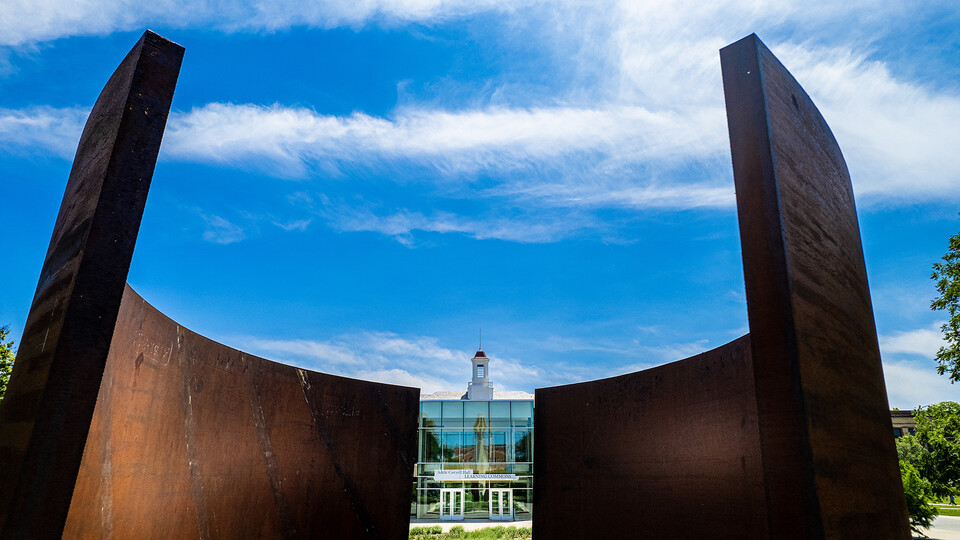
Three Arts and Sciences faculty members have been named fellows of the American Association for the Advancement of Science, the world's largest general scientific society. Fellows are selected by their peers for scientifically or socially distinguished achievements that advance science or its application.
- Patrick Dussault, Charles Bessey professor of chemistry, for distinguished contributions to the chemistry of organic peroxides, including peroxide natural product synthesis, mechanistic studies and innovative peroxide-mediated oxidation transformations.
- Mary Anne Holmes, emeritus professor of earth and atmospheric sciences, for distinguished contributions to developing and disseminating strategies to address gender inequity in geoscience, and the advancement of science through teaching, administration, research and service.
- Robert Powers, professor of chemistry, for distinguished contributions to the fields of biological nuclear magnetic resonance and metabolomics, particularly for methods with unique applications for biomarker discovery, structure analysis and disease diagnosis.
The tradition of electing AAAS fellows dates to 1874. This year's fellows will be formally announced in the Nov. 25 issue of the journal Science. They will be recognized Feb. 18, 2017, at the AAAS annual meeting in Boston. Nebraska's honorees are among 391 members who were elected fellows this year.
The Nebraska faculty has a strong tradition in receiving this honor. In 2015, a record eight faculty members were named AAAS fellows.
*
Patrick Dussault, chemistry
Organic peroxides have a bad rep. The chemical group's explosive nature is the reason we tolerate liquid restrictions on airplanes and why industry is reluctant to employ peroxides on a large scale.
Patrick Dussault has helped make organic peroxides safer for use in chemical reactions, expanding opportunities for use in drug therapies, plastics and other applications.
"Peroxides have been under used," Dussault said. "We are trying to develop tools to allow others to access the rich potential of this functional group."
When organic peroxides break down, they release tremendous energy, limiting their use as building blocks within new molecules. Dussault's team developed methods to safely decompose peroxides to make ethers, a common chemical group found in drugs, agrochemicals and plastics.
They also improved ozonolysis, which employs ozone gas to cleave chemical bonds. The reaction forms unstable, sometimes explosive peroxide intermediates, limiting its use. Dussault's team developed strategies to capture and decompose the peroxides as they are generated. The new methods could expand the use of ozonolysis, which doesn't require metals and generates few byproducts.
"I was deeply honored," Dussault said of his AAAS recognition. "There are some pretty great people who have come before so it's a bit humbling."
*
Mary Ann Holmes, Earth and Atmospheric Sciences
Geoscientist Mary Anne Holmes' passion to improve women's science careers led to an international leadership role advancing gender equity in the sciences.
"My year as president of the Association for Women Geoscientists was eye-opening," Holmes said. "I learned that it's not enough to complain about a problem. You have to make a plan and move forward to address the causes."
In the years since, she's done just that, developing and implementing research-driven strategies to broaden women's participation in the sciences. Holmes led several major National Science Foundation-funded projects aimed at reducing barriers to women's success. She also directed ADVANCE-Nebraska, a research program that resulted in doubling the proportion of women hired in STEM fields at Nebraska.
Through an energetic campaign of seminars, workshops and professional committee participation, Holmes brought attention to gender issues in science and helped cultivate the next generation of women scientists.
"Although frustratingly slow, it is at least energizing to see that there are ways forward and that I can be doing something to effect change," she said.
"I'm very proud that AAAS so values this work that moves us toward gender equity."
*
Robert Powers, Chemistry
Robert Powers' research focuses on developing tools to better understand diseases. His contributions have helped researchers investigate new drug therapies for a variety of diseases, from cancers and autoimmune disorders to infectious and neuromuscular diseases.
His early work used nuclear magnetic resonance, or NMR, to determine the structure of protein molecules associated with diseases. NMR operates like an MRI, but instead of peering inside humans, NMR images molecules.
By understanding protein structure, researchers are able to elucidate its function and contribution to diseases. This information helps identify drug therapies targeting the protein.
More recently, Powers' work has incorporated NMR with the relatively new fields of metabolomics and bioinformatics, both of which rely on tools to analyze large-scale information.
He has developed important software and methods that use all three fields to integrate and analyze experimental data with predicted informatic data to better understand protein structure and function.
Powers collaborates with numerous researchers in Nebraska and nationally who work on a broad spectrum of diseases, including Parkinson's, pancreatic cancer, multiple sclerosis and tuberculosis.
"It's humbling and also very exciting to be part of such a prestigious group of scientists," he said of his AAAS recognition.


